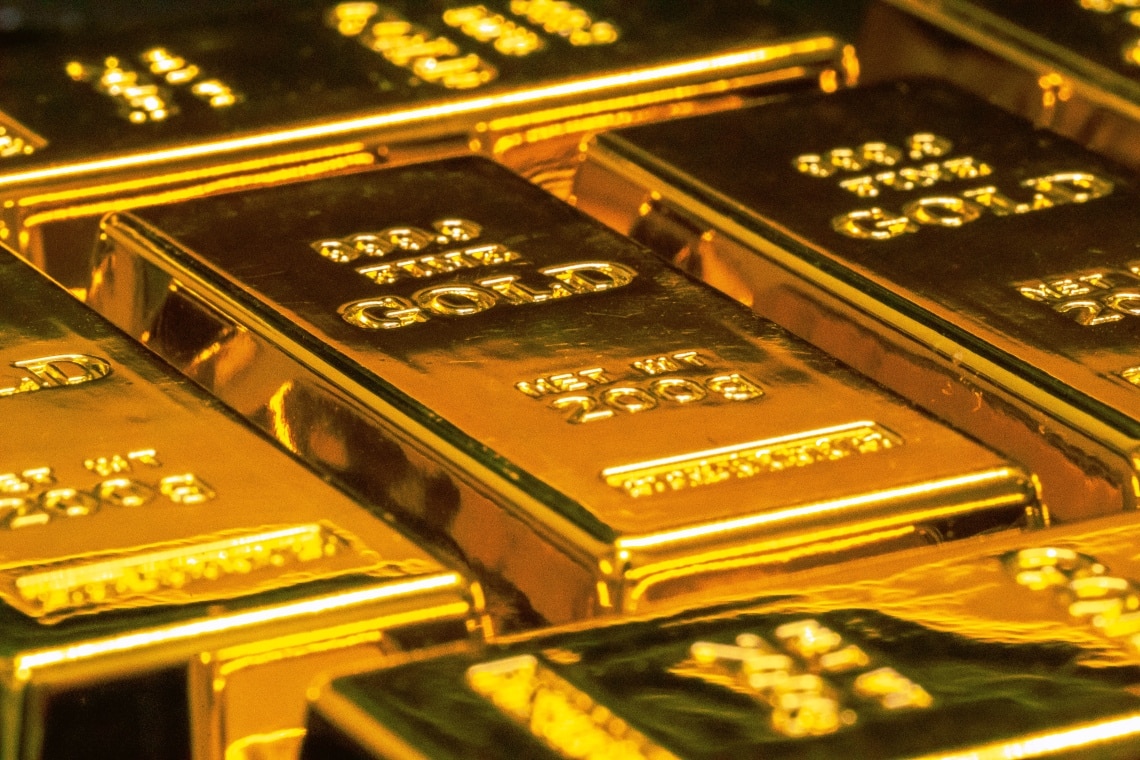In times of crisis nothing arouses the attention of Central Banks like the price of Gold, which after an “abnormal” period seems to have regained the scene.
Summary
Macroeconomic landscape and the price of Gold
The third quarter of 2022 marked what many analysts believe to be a consequence of the monetary policies of the Federal Reserve and its peers, but also a precursor signal of a bear market now on its waning path.
Central banks in Q3 have been buying the precious metal at an unprecedented rate.
399 tons of gold were put into the vaults of Central Banks around the world, a never-before-seen amount worth $20 billion at the average price of $1,600.
Massive purchases by institutional investors and central banks during this period have contributed to rising demand according to the World Gold Council.
On the eve of the Federal Reserve meeting that sanctioned a rate hike, the price of gold rose further, moving steadily above $1,600.
Not only the ECB and the Fed, but also jewelers and buyers of gold bars and coins made their presence felt in the third quarter of the year.
The only sore spot in the gold world was put by exchange-traded funds (ETFs), which saw a major contraction, but one that was widely expected.
Gold, which is a safe-haven asset, went wild but some financial investors sold shares in ETFs backed by the precious metal as rising interest rates pushed up yields on other assets.
The price of Gold has contracted by about 8% in this quarter of the year but despite the drop in value the demand for jewelry and Gold in general has risen sharply embodying a soothing signal for lovers of the safe haven asset.
Globally, demand for Gold grew by 28% touching 1,181 tons between July and September 2022 while in the same time frame last year there were only (so to speak) 922 tons in demand.
Demand with this year’s monster figures returns to pre-pandemic levels and even outperforms estimates.
Purchases of the precious metal up to last month had been 673 tons which in itself is an impressive figure as it represents more than the total of all tons of gold demanded in any year up to 1967 according to the World Gold Council.
Gold: an asset that never dies
The countries that stood out most in demand for the safe-haven commodity were (through their respective central banks) Turkey, Uzbekistan, Qatar, and India, but the World Gold Council said that a significant amount of gold evaded estimates and was bought by central banks that did not declare their purchases, leaving a hole in the report.
The prime suspects are easily found in those with the largest gold stocks in the world, namely China and Russia.
The most caught up in the gold fever was Erdogan’s Turkey, where purchases of gold bars and coins rose 300% year on year, accounting for as much as 46.8 tons in the period from June to September 2022 alone.
Louise Street, analyst at World Gold Council, said:
“Looking ahead, we expect central bank purchases and retail investments to remain strong. We also expect jewelry demand to continue to perform strongly in some regions such as India and Southeast Asia.”
As of today, gold boasts +0.90% at $1,657 an ounce.
Oanda analyst Craig Erlam‘s view is that the time to invest in Gold is back:
“Gold has been battered by the rapid rise in interest rates and traders are increasingly expecting the Fed to join the Reserve Bank of Australia to slow the pace of monetary tightening. Any indication to that effect may come in December. meeting tomorrow, November 2, a rate hike of 75 basis points is expected, ed) could support gold, even if considerable uncertainty remains.”
Rupert Rowling, analyst at Kinesis Money, adds to the topic that:
“Both the Federal Reserve and the Bank of England are likely to raise their benchmark interest rates by 75 basis points this week, putting pressure on the non-dividend-paying asset of gold. However, with these hikes widely discounted, it will take an unexpectedly more modest or more substantial move to impact markets when central banks announce their decisions on Wednesday and Thursday respectively. With inflation still stubbornly high and the US labor market holding up relatively well so far. , the US central bank may have enough breathing room to continue its hawkish stance for a while longer. It is difficult for gold to make significant gains. However, with the price of gold close to the lowest levels of the past two years, any drop in prices attracts a surge in physical demand, particularly from Asian buyers, which provides solid support for yellow metal prices. So if it’s hard to see gold rise to $ 1,700 an ounce, it’s just as unlikely that its price will drop below $ 1,600 an ounce.”
According to Wayne Gordon, strategist at Ubs, gold’s behavior on external influences has also changed, the outlook affected by the behavior of the dollar and the US stock market as well as the Fed’s monetary policies over all.
“We therefore see downside risks for gold until the end of the year, some stabilization in the first half of 2023 and a moderate recovery by the end of next year.”
This morning, Gold with December delivery exchanges at $1,655.50, up 0.35%.
Gold futures on the Comex division of the New York Mercantile Exchange, are trading at $1 per troy ounce.
If we expand our view to alternatives, Comex, shows us that silver, is up 0.05% to $19.68 per troy ounce, while copper up 0.97% for December deliveries touching $3.50 a pound.




